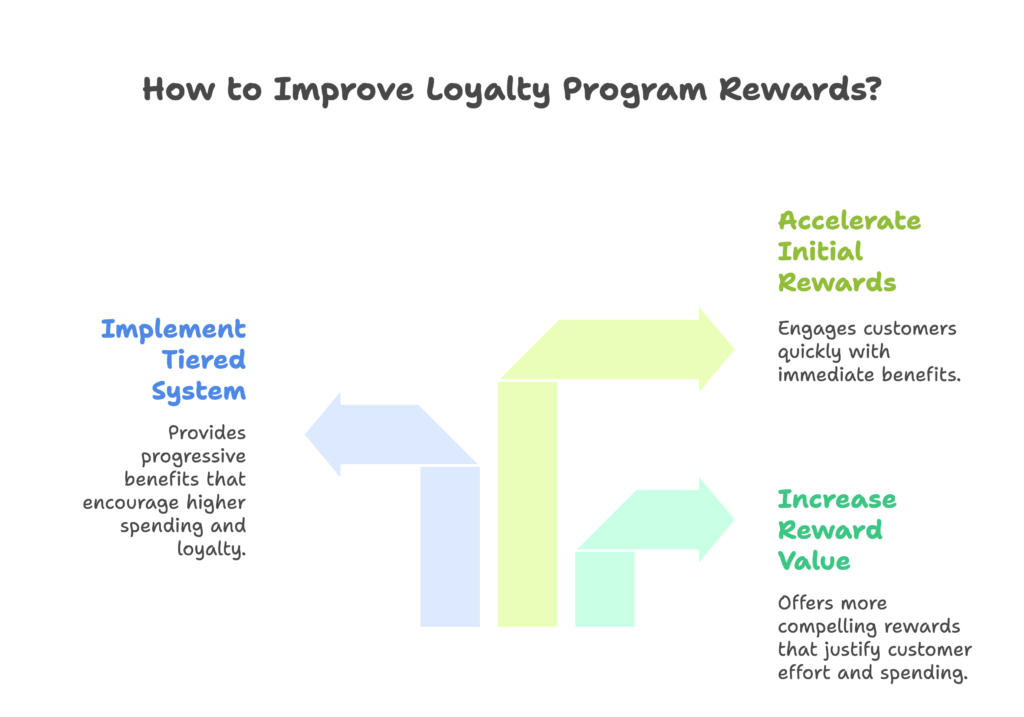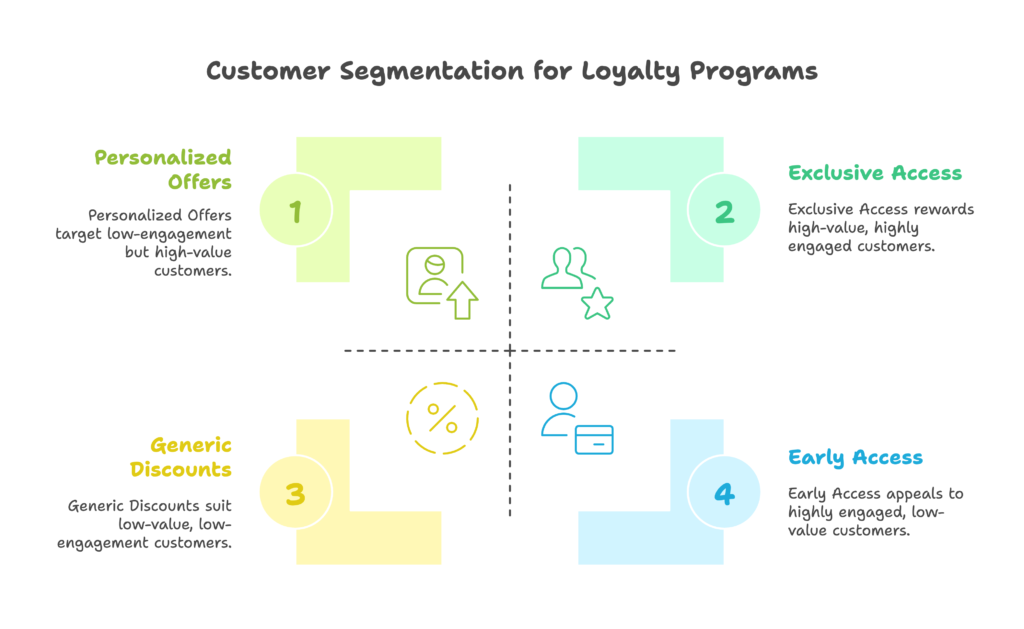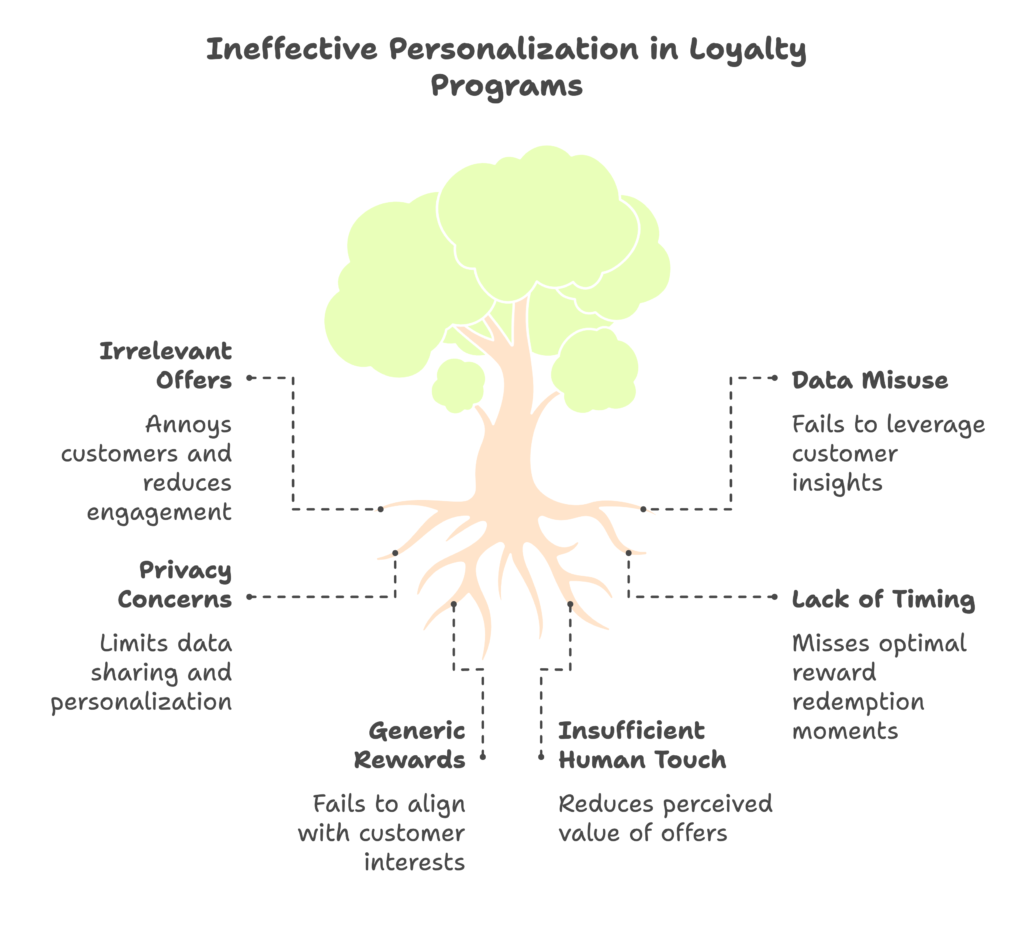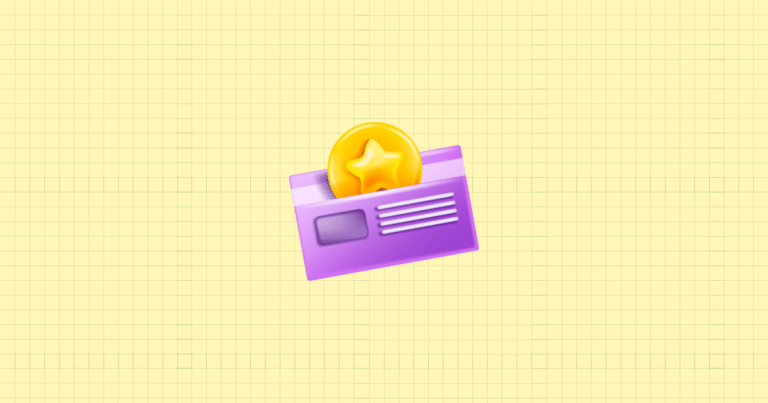You’ve invested countless hours perfecting your Shopify store—curating products, optimizing your site, and driving traffic. Yet something feels off. Despite steady sales, you notice customers aren’t coming back. They buy once and disappear into the digital abyss. Sound familiar?
This is where loyalty programs come in. When done right, they transform one-time shoppers into devoted brand advocates who return again and again. But here’s the stark reality: 77% of point-based loyalty programs fail within two years. That’s not just disappointing—it’s a serious waste of resources.
In this guide, we’ll explore why so many Shopify loyalty programs crash and burn, and more importantly, how you can avoid these costly pitfalls. You’ll discover practical, actionable strategies to create a program that genuinely resonates with customers and drives sustainable growth for your store.
The Value Proposition of Loyalty Programs for E-commerce
Let’s talk numbers. It costs five to seven times more to acquire a new customer than to retain an existing one. Loyalty programs address this imbalance directly. Customers enrolled in effective loyalty programs shop 29% more frequently and spend 37% more than non-members. These aren’t trivial increases—they’re game-changers for your bottom line.
But loyalty programs offer more than just improved retention metrics. In today’s crowded Shopify ecosystem, they provide crucial differentiation. When shoppers can buy similar products from countless stores, why should they choose yours? A thoughtful loyalty program answers that question convincingly.
Beyond direct sales impact, loyalty programs create invaluable opportunities for data collection. Each interaction gives you deeper insights into customer preferences, allowing for more personalized marketing—a critical advantage in an era where personalization isn’t just appreciated, it’s expected.
Why Many Shopify Loyalty Programs Fail
Despite their potential, loyalty programs often disappoint. The statistics are sobering: beyond the 77% failure rate mentioned earlier, research shows that the average consumer abandons 79% of loyalty programs they join. Why? The rewards simply aren’t compelling enough.
When customers cite reasons for disengagement, the list is consistent: rewards take too long to earn, the program is confusingly complex, or the benefits feel irrelevant to their needs. Each abandoned program represents not just a missed opportunity, but active damage to your brand relationship.
The cost extends beyond wasted development resources. A poorly implemented loyalty program creates negative impressions that are hard to overcome. Customers who feel a program is stingy or confusing don’t just ignore it—they develop skepticism toward your brand as a whole.
Now, let’s dive into the six critical mistakes that doom Shopify loyalty programs and the practical steps you can take to avoid them.
Mistake #1: Offering Rewards with Little to No Value
Imagine saving your coffee shop punch card for months, only to discover the free drink is just a small cup of plain coffee—no customizations allowed. Disappointing, right? This is precisely how customers feel when they engage with underwhelming loyalty programs.

The Problem of Insufficient Reward Value
The most common complaint about loyalty programs is painfully straightforward: the rewards aren’t worth the effort. Points accumulate at a glacial pace, requiring thousands of dollars in purchases for minimal returns. One major beauty retailer requires $2,000 in spending to earn just $10 in store credit—a value proposition few find compelling.
High redemption thresholds compound this problem. When customers must accumulate 500 points before accessing any reward, many will never reach the goal. They’ll abandon your program long before seeing any tangible benefit, creating a negative impression that’s difficult to reverse.
This value disconnect fundamentally undermines program psychology. The dopamine hit of earning rewards drives loyalty program engagement. Without regular payoffs, that motivational engine stalls out completely.
Solutions for Creating Valuable Rewards
Designing rewards that feel genuinely valuable doesn’t necessarily mean breaking the bank. It’s about creating appropriate value perception. Industry benchmarks suggest rewards should represent 2-10% of customer spending, depending on your margins. Luxury brands with higher margins can afford to be more generous than low-margin businesses.
For Shopify stores specifically, point-to-currency conversion should be transparent and fair. A good rule of thumb: customers should understand exactly what points are worth without needing a calculator. Simple conversions like “100 points = $5 off” are far more effective than complex formulas.
Consider implementing a tiered system that rewards your most valuable customers appropriately. Using Shopify Plus features or apps like LoyaltyLion or Rise.ai, you can create progressive benefits that increase with customer spending. A basic structure might include:
- Bronze tier: 2% back in points (accessible to all customers)
- Silver tier: 5% back in points (after $300 in spending)
- Gold tier: 8% back in points + free shipping (after $750 in spending)
Perhaps most importantly, accelerate initial rewards. Front-load your program so new members experience benefits quickly. A welcome bonus of 500 points worth $5, or double points on first purchases, creates immediate positive reinforcement. This early win dramatically increases the likelihood of continued engagement.
Mistake #2: Overcomplicating Program Structure and Enrollment
Have you ever abandoned a signup form halfway through? That frustration is exactly what potential loyalty members experience when facing overly complex programs. Simplicity isn’t just nice to have—it’s essential.
The Complexity Problem
Complexity kills engagement. When your loyalty program requires a manual to understand, you’ve already lost. Warning signs include multi-paragraph explanations of how points work, byzantine restrictions on redemption, or legal terms that read like a mortgage contract.
The enrollment process itself often creates unnecessary friction. Each additional form field reduces conversion rates by approximately 7%. For Gen Z shoppers especially, who make purchase decisions in seconds, lengthy registration processes are instant dealbreakers.
Technical barriers compound these issues. When loyalty program enrollment isn’t seamlessly integrated with your Shopify checkout flow, you miss the most natural moment to convert shoppers into program members.
Simplification Strategies for Shopify Stores
Start by streamlining enrollment. Implement one-click registration through existing Shopify customer accounts. This approach eliminates duplicate data entry and reduces abandonment. For guest checkouts, limit initial registration to essential information (email and name), using progressive profiling to gather additional details over time.
Next, focus on crystal-clear communication. Create a dedicated, visually appealing explainer page on your Shopify store that outlines program benefits in simple terms. Use infographics rather than blocks of text to illustrate how points are earned and redeemed. Consider this formula for effective communication:
- What customers get (the tangible benefits)
- How they earn rewards (in one sentence if possible)
- When they can redeem (immediately? after threshold?)
Testing is crucial for optimization. Conduct user testing with real customers to identify points of confusion. A/B test different enrollment flows to determine which converts better. Pay particular attention to where users abandon the process—these drop-off points highlight specific friction that needs addressing.
Remember: a simplified program that attracts high participation will outperform a feature-rich program that few customers use.
Mistake #3: Treating All Customers the Same
When your top customer who’s spent thousands receives exactly the same benefits as someone who made a single $20 purchase, you’re not just missing an opportunity—you’re actively devaluing your most important relationships.

The Problem with One-Size-Fits-All Programs
Generic loyalty programs ignore a fundamental reality of commerce: not all customers contribute equally to your business. The Pareto principle typically applies—roughly 20% of customers generate 80% of revenue. When your program fails to acknowledge these differences, high-value customers feel underappreciated.
Beyond just recognition, treating all customers identically means missed targeting opportunities. Different customer segments have distinct motivations and preferences. The discount-motivated occasional shopper responds to different incentives than your product-loyal enthusiast.
This undifferentiated approach leads to inefficient resource allocation. You end up overinvesting in low-potential customers while underserving those with the highest lifetime value potential.
Implementing Customer Segmentation in Shopify Loyalty Programs
Effective segmentation starts with tiered programs that reflect actual customer behavior. Rather than arbitrary thresholds, analyze your Shopify data to identify natural spending breaks. Where do “good” customers diverge from “great” ones in your specific business? Those transitions should define your tier boundaries.
Leverage the wealth of data Shopify already collects. Using Shopify’s native analytics or integrating with loyalty apps, segment customers based on:
- Purchase frequency and recency
- Average order value
- Specific product categories purchased
- Geographical location
- Acquisition source
These segments allow for personalized reward offerings that resonate with different customer types. For example:
- High-AOV customers might value exclusive product access or concierge service
- Frequent shoppers might prefer expedited shipping or early access to sales
- Category enthusiasts benefit from rewards specific to their interests
The technology to implement this segmentation is readily available. Shopify Plus merchants can utilize Shopify Flow for automated segmentation, while other merchants can leverage apps like Loyalty Lion, Smile.io, or Rise.ai that integrate directly with your store data.
Mistake #4: Poor Program Communication and Promotion
“If you build it, they will come” might work for magical baseball fields, but it’s a recipe for disaster with loyalty programs. Even the most brilliant rewards structure fails when customers don’t know it exists.
The Visibility Problem
Visibility issues manifest in several telltale ways. When your loyalty program enrollment rate sits below 15% of repeat customers, you’re facing a promotion problem. Similarly, if customer feedback or surveys reveal surprise that you even have a loyalty program, it’s clearly not prominent enough in your customer journey.
Inadequate promotion creates a vicious circle. Low enrollment leads to minimal program impact, which reduces internal enthusiasm for the program, resulting in even less promotion. Before long, your loyalty initiative becomes an afterthought—a wasted investment generating minimal returns.
This invisibility represents substantial opportunity cost. Every non-enrolled customer represents lost engagement potential and missing data for personalization efforts.
Effective Promotion Strategies for Shopify Loyalty Programs
On-site promotion forms the foundation of program visibility. Strategic placement of loyalty CTAs throughout your Shopify store ensures maximum exposure. Key locations include:
- Header navigation (persistent “Rewards” link)
- Account dashboard (prominent program status)
- Product pages (point earning potential)
- Cart page (points available/earnable with purchase)
- Post-purchase screen (enrollment or points earned confirmation)
For new visitors, consider a tasteful popup highlighting program benefits, timed to appear after meaningful engagement (e.g., after viewing 2+ products or spending 30+ seconds on site). This balances visibility against interrupting the shopping experience too early.
Email marketing provides another powerful promotion channel. Create a dedicated loyalty program welcome series for new enrollees explaining benefits and encouraging first redemption. For non-members, include program highlights in regular communications with specific CTAs to join.
Social proof amplifies program appeal. Showcase members enjoying exclusive benefits or products on social media. User-generated content featuring loyalty rewards creates authentic promotion that resonates more than branded messaging alone.
Finally, implement ongoing engagement tactics to maintain program visibility. Regular updates about point balances, available rewards, or limited-time promotions keep your program top-of-mind. Seasonal campaigns tied to loyalty (like double-point holidays) create recurring engagement opportunities throughout the year.
Mistake #5: Sending Irrelevant Offers and Poor Personalization
Receiving a “special offer” for products you’d never use isn’t just ineffective—it’s actively annoying. Yet many loyalty programs repeatedly commit this cardinal sin of marketing.

The Personalization Gap
Personalization failures take many forms. The most obvious: gender-inappropriate offers (sending beard oil promotions to customers who exclusively purchase women’s products). More subtle but equally problematic: ignoring purchase patterns and price sensitivity when creating rewards.
These missteps occur despite customers voluntarily sharing data through their purchases and browsing behavior. Modern consumers, particularly Gen Z, maintain seemingly contradictory attitudes toward personalization—expecting relevant offers while being highly sensitive to privacy concerns.
This tension creates a narrow path for marketers. Personalization must be accurate enough to be relevant without feeling invasive or “creepy.” Finding this balance is challenging but essential for program success.
Implementing Effective Personalization in Shopify
Leveraging Shopify’s robust customer data is your starting point. Purchase history provides clear signals about preferences. Someone who repeatedly buys skincare products is likely to value skincare-related rewards more than someone who only purchases makeup.
Beyond basic category preferences, analyze browsing behavior. Products viewed but not purchased often indicate interest constrained by price—making them perfect candidates for point redemption options.
Create reward options that reflect these insights. Rather than generic store credit, offer category-specific rewards that align with demonstrated interests. Allow customers to redeem points for products they’ve previously viewed or added to wishlists.
Timing matters as much as content. Analyze purchase cycles to identify natural reordering periods. Consumable products often follow predictable replacement patterns—offering relevant rewards just before typical repurchase timing can dramatically increase conversion.
Balance automation with human touch by implementing special occasion rewards. Birthday offers remain surprisingly effective despite their ubiquity. Purchase anniversaries provide another natural moment for recognition that feels personal rather than algorithmic.
Finally, create occasional surprise-and-delight moments for your most valuable customers. These unexpected gestures—a free gift or exclusive access—often generate disproportionate goodwill compared to their cost.
Mistake #6: Technical Implementation and Integration Issues
Even perfectly designed loyalty programs fail when the technology supporting them creates friction rather than removing it. For Shopify merchants specifically, technical missteps can undermine otherwise promising loyalty initiatives.
Common Technical Pitfalls
Siloed loyalty systems represent the most prevalent technical problem. When your loyalty program operates as a standalone entity disconnected from your broader Shopify ecosystem, fragmentation is inevitable. Customer accounts show one reality while the loyalty program reflects another, creating confusion and frustration.
Integration gaps manifest in numerous ways: points that don’t appear immediately after purchase, rewards that can’t be applied seamlessly at checkout, or customer recognition failures across devices. Each disconnection damages program credibility.
Many merchants compound these issues through poor app selection. Choosing loyalty solutions based solely on cost or surface-level features, without considering integration requirements, creates technical debt that becomes increasingly difficult to resolve as your program grows.
Building an Integrated Loyalty Technology Stack on Shopify
Selecting the right loyalty app for your Shopify store requires careful evaluation. Beyond basic feature comparison, consider how each option integrates with your existing tech stack and business processes. Key factors include:
- Native Shopify integration quality (checkout, customer accounts, etc.)
- Compatibility with your email marketing platform
- Mobile responsiveness and performance impact
- Data portability if you need to switch platforms later
- Scalability as your customer base grows
Once selected, implement best practices for integration. Establish a “single source of truth” for customer data, typically your Shopify customer database. Ensure bidirectional synchronization between systems so changes in one platform reflect accurately in others.
Pay particular attention to checkout integration. The moment of purchase represents both the primary point-earning opportunity and a critical redemption juncture. Testing should verify that points appear instantly after purchase and that redemption options are clearly presented during checkout.
Establish proactive monitoring protocols rather than waiting for customer complaints. Regular technical audits should check for synchronization issues, delayed point crediting, or redemption failures. Create a schedule for routine maintenance and updates to prevent technical degradation over time.
Conclusion: Building a Sustainable Loyalty Strategy for Your Shopify Store
Loyalty programs aren’t just nice-to-have features—they’re strategic assets that can fundamentally transform your Shopify store’s economics. When executed thoughtfully, they create a virtuous cycle of increased purchase frequency, higher average order values, and strengthened customer relationships.
Key Success Factors for Shopify Loyalty Programs
Successful loyalty programs share several core characteristics, regardless of the specific business context. First, they align precisely with business objectives. Before implementation, define exactly what you want your program to achieve—customer retention, AOV increases, or community building—and design accordingly.
Second, they embrace customer-centric design. The most effective programs start not with what’s convenient for the business, but with what genuinely motivates customers. This requires ongoing dialogue with your audience through surveys, testing, and careful analysis of engagement patterns.
Finally, they evolve continuously. Customer expectations shift over time. What feels generous today may seem stingy tomorrow. Build flexibility into your program structure and regularly reassess value propositions to maintain relevance.
Implementation Roadmap
Begin with thorough assessment. Audit your current customer engagement initiatives, even if you don’t have a formal loyalty program. Analyze purchase patterns to identify natural segments and behavior trends that should inform program design.
Set clear, measurable objectives. Define specific KPIs—enrollment rate, point redemption percentage, change in purchase frequency among members—that will determine success. These metrics should connect directly to your broader business goals.
Select appropriate technology solutions based on your specific requirements rather than generic recommendations. The right loyalty platform for a high-volume fashion store differs from what works best for a specialty food retailer.
Consider a phased rollout approach. Launch core functionality first, then expand features based on customer feedback and performance data. This iterative approach minimizes risk while allowing for continuous optimization.
Most importantly, view your loyalty program as a long-term strategic investment rather than a short-term tactical promotion. The full value emerges over time as behavioral changes compound and customer data accumulates.
By avoiding the six critical mistakes we’ve explored—insufficient value, overcomplexity, lack of segmentation, poor promotion, irrelevant personalization, and technical integration issues—you position your Shopify loyalty program for sustainable success.
References
- Gameball. (2024, August 28). 5 Must-Avoid Mistakes for a Successful Customer Loyalty Program. https://www.gameball.co/blog/customer-loyalty-program-mistakes-to-avoid
- Loyalty Reward Co. (2025, March 6). Shopify Loyalty Programs: The Definitive Guide For eCommerce. https://loyaltyrewardco.com/shopify-loyalty-programs-definitive-guide-ecommerce/
- Shopify. (2018, October 4). How to Craft a Loyalty Program Your Customers Won’t Ignore. https://www.shopify.com/th/retail/how-to-create-a-retail-loyalty-program
- OSF Digital. (n.d.). 6 Mistakes to Avoid With Your Loyalty Program. https://osf.digital/library/blog/6-mistakes-to-avoid-when-launching-your-ecommerce-loyalty-program
- GetDuo. (2024, October 7). Why Shopify Loyalty Programs Fail And How To Make Yours Work. https://getduo.co/blog/why-shopify-loyalty-programs-fail-and-how-to-make-yours-work
- BuildWithToki. (2023, September 18). Implementing and Managing a Shopify Loyalty Card Program. https://www.buildwithtoki.com/blog-post/shopify-loyalty-card
Ready to supercharge your Shopify store’s customer retention and boost sales? Growth Suite helps you create effective, personalized discount campaigns that turn one-time buyers into loyal advocates. Our smart discount technology analyzes customer behavior to deliver the right offer at the perfect moment, all while maintaining your brand integrity. Install Growth Suite from the Shopify App Store today—it’s free to get started, and you’ll see results from day one!
Also don’t forget to check these articles;




